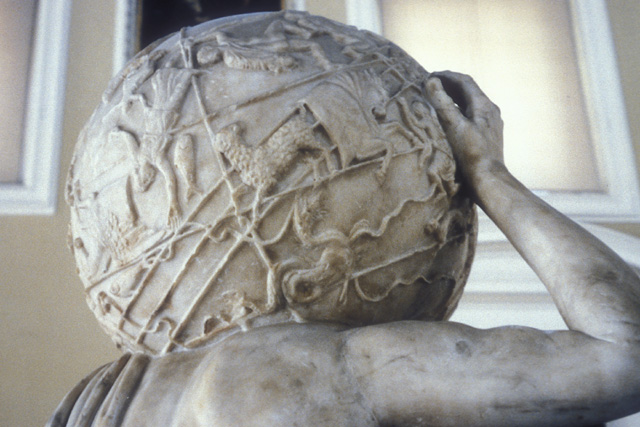This is the central question which should be the focus. I am sorry for following the distraction about Christmas, and for my error in reading Pliny, which Ulan has kindly corrected. To me it is obvious that Christianity is a solar religion, and I find it frustrating that this simple intuition is so opaque to others. So the challenge is to go back to first principles and provide a compelling logical argument.Leucius Charinus wrote:The big question is how did the Jesus Story fit in to this already extant pagan environment of "theology founded on astronomy".
The fit between Jesus and astronomy can be approached by starting from the line in The Lord’s Prayer ‘thy will be done on earth as in heaven’, an ethical and ontological injunction whose meaning is strongly cognate to the Hermetic Egyptian maxim ‘as above so below’. These central religious maxims present the idea that a harmony between earth and heaven is the supreme goal, that the temporal world of change should follow the same eternal ordered laws as the celestial sphere.
The Bible presents heaven as referring primarily to the visible firmament, not to the later myth of a cloudy afterlife. So for example the angel’s call in the apocalypse to “Worship him who made the heaven, the earth, the sea, and the springs of waters!" naturally puts heaven together with the rest of the natural creation. What this all means is that observation of the order of heaven provides the natural template for the ideal goal of order on earth, an ideal represented by the eschatological vision of Christ the King.
Ancient astronomy rediscovered the accurate rate of precession of the equinoxes in about 134 BC, when Hipparchus compared a total lunar eclipse to ancient Babylonian star maps and calculated the speed of the shift. Over the subsequent centuries before the writing of the Gospels, this knowledge meant that Gnostic seers could observe and predict the movement of the alpha and omega point of the year, the vernal equinox. The picture below shows the position of the equinox at the time of Christ, in 21 AD.

Imagining the perspective of ancient observers, a number of simple observations can be seen which illustrate how the Christ Myth is based directly on this astronomical movement.
The diagonal yellow line is the path of the sun, travelling forward through the year, and backward through the great year of precession. This yellow line has been constant against the stars for all history, equating to what Plato in the Timaeus called “the same”. The horizontal white line is the celestial equator, the line separating the north and south hemispheres, crossed by the sun at the spring and autumn equinoxes. This line moves at the rate discovered by Hipparchus of more than one degree per century, actually at one degree per 71.6 years. This line equates to what Plato in the Timaeus called “the different”, in his explanation that two great circles form an X in the heavens, as his wonderful definition of time as the moving image of eternity attests.
For the two thousand years before Christ, the X point moved through the constellation of the ram, whose foot is shown anointing the point where the X moves into the sign of the fishes. The ancient use of this motif appears on the Farnese Globe, dated to the second century BC.

At the time of Christ, when the equinox point shifted across the first fish of Pisces, the seasons and the stars were in perfect alignment for the only time in history, in terms of the western cosmology. This observable cosmic attunement provides a compelling natural image for the Biblical concepts of glory and grace. The observed movement of the stars towards this alignment equates directly to the concept of the pre-existent logos or reason, understood as cosmic order. This temporal order was imagined as incarnate at the moment of celestial harmony at the time of Christ, understood as the beginning and end of the grand cycle of time, providing the basis for the description of Christ in Revelation 15:3 as King of the Ages.
If the Bible is approached from the hypothesis that the authors sought to explain the observed harmony between earth and heaven as seen in this motif from precession, basically the whole book starts to make scientific sense. The Apocalypse in particular is full of precessional imagery, often very direct, but all lightly hidden due to the need to be accepted in the literalist canon. Precession is the interpretative key, proving that Christ was imagined as anthropomorphic allegory for the power and stability of the sun.
The great stumbling block for believers and foolishness for scientists here is that the myth of Christ crucified in the heavens is based on direct and simple visual observation of the sun and the sky. But the simplicity of the observation is complicated by the extremely slow pace of the shift of the ages. My view is that the authors could see that for some mysterious reason the masses of believers were simply unable to engage with astronomy. This failure continues to bedevil Christianity, which has been thoroughly traumatised by the malevolent error of literalism, to the point that people are simply blind to the facts that are hidden in plain sight in the texts.